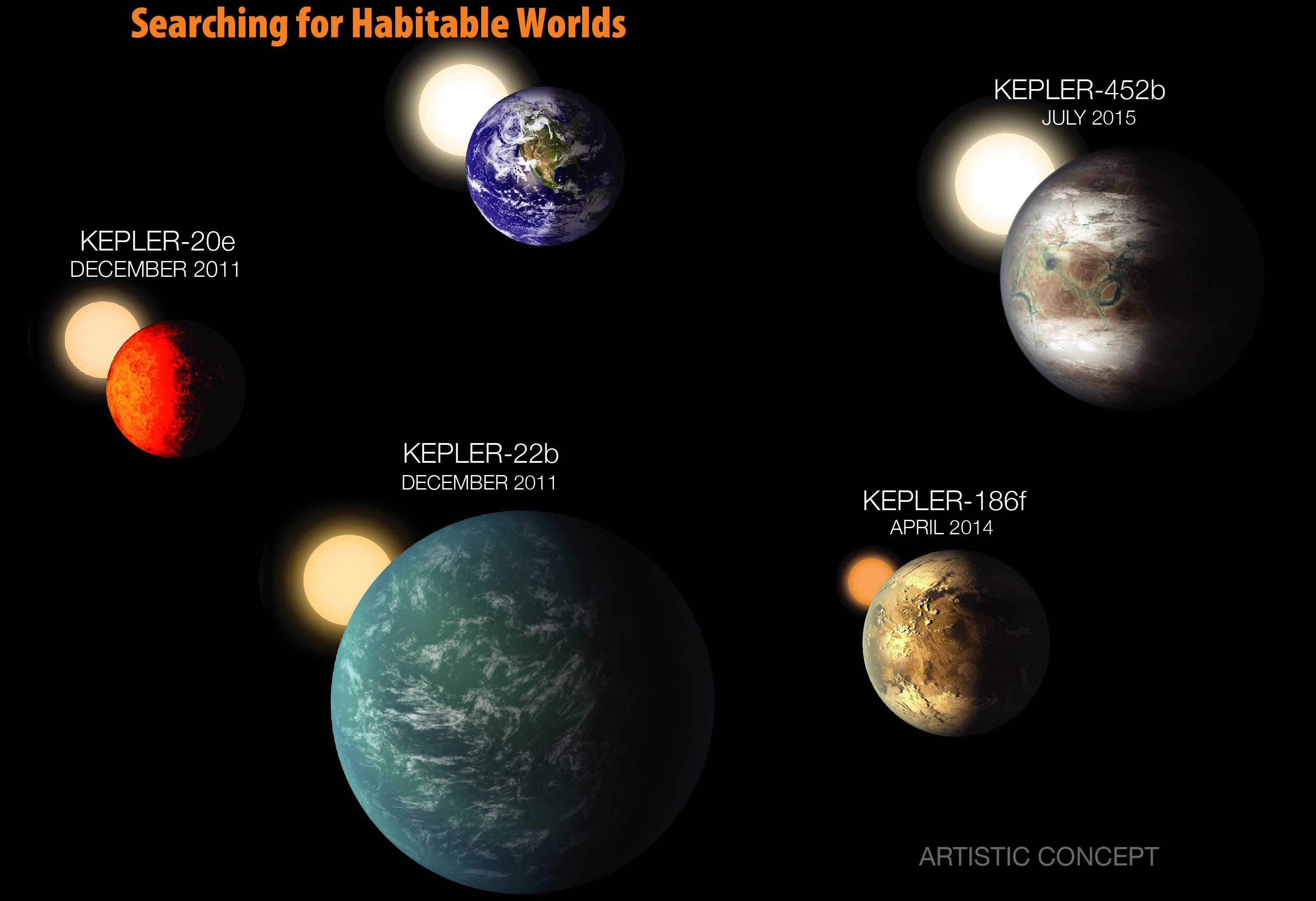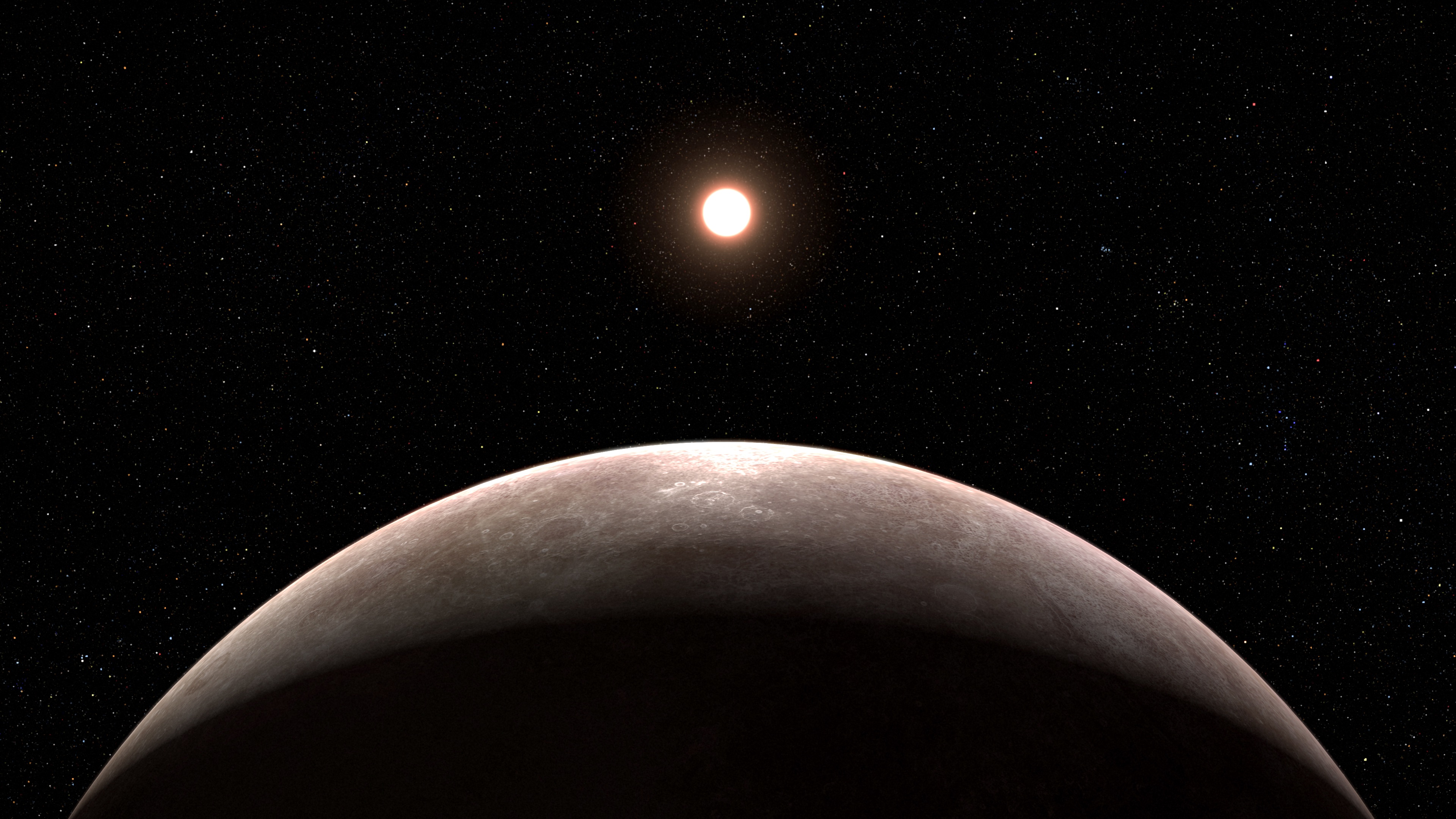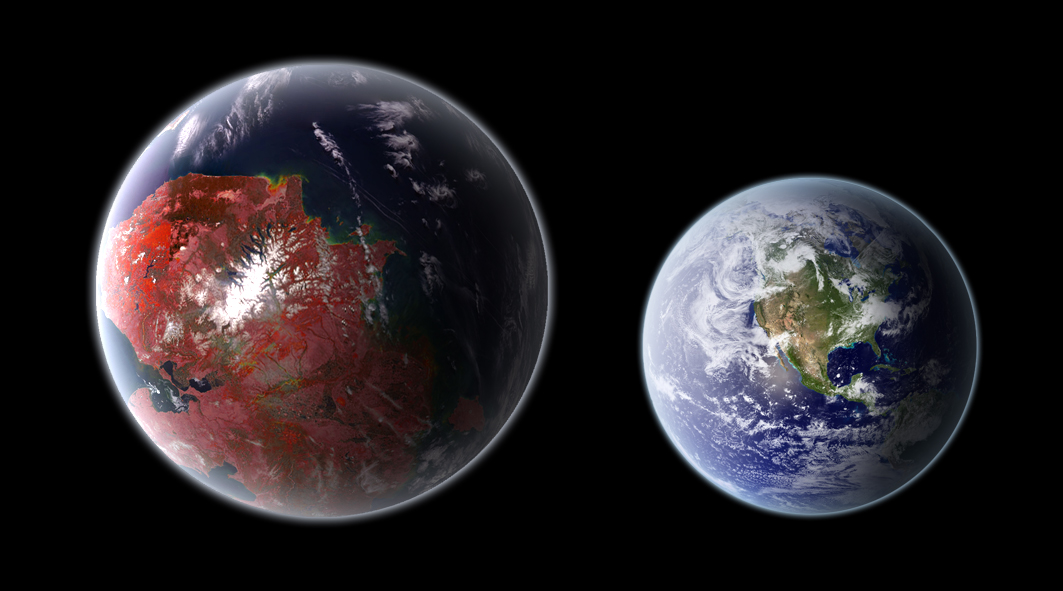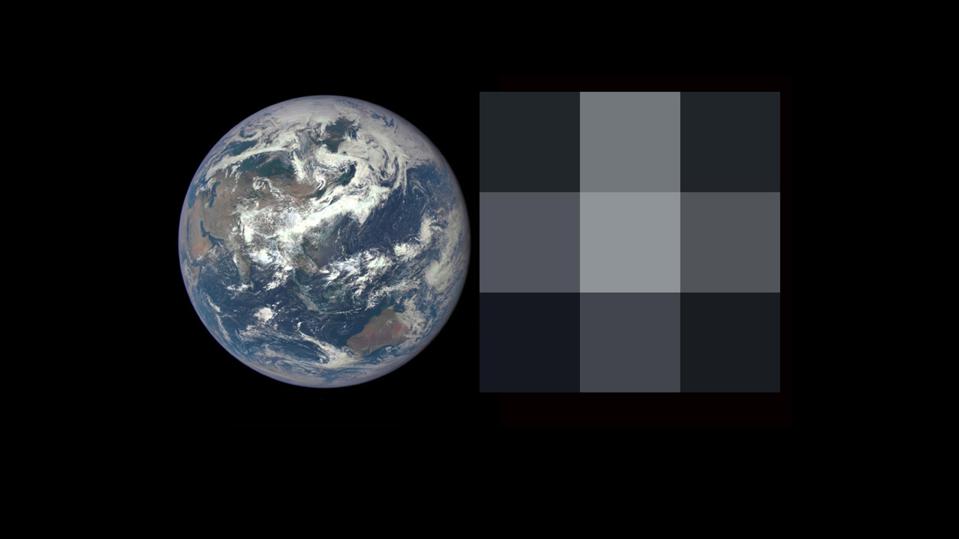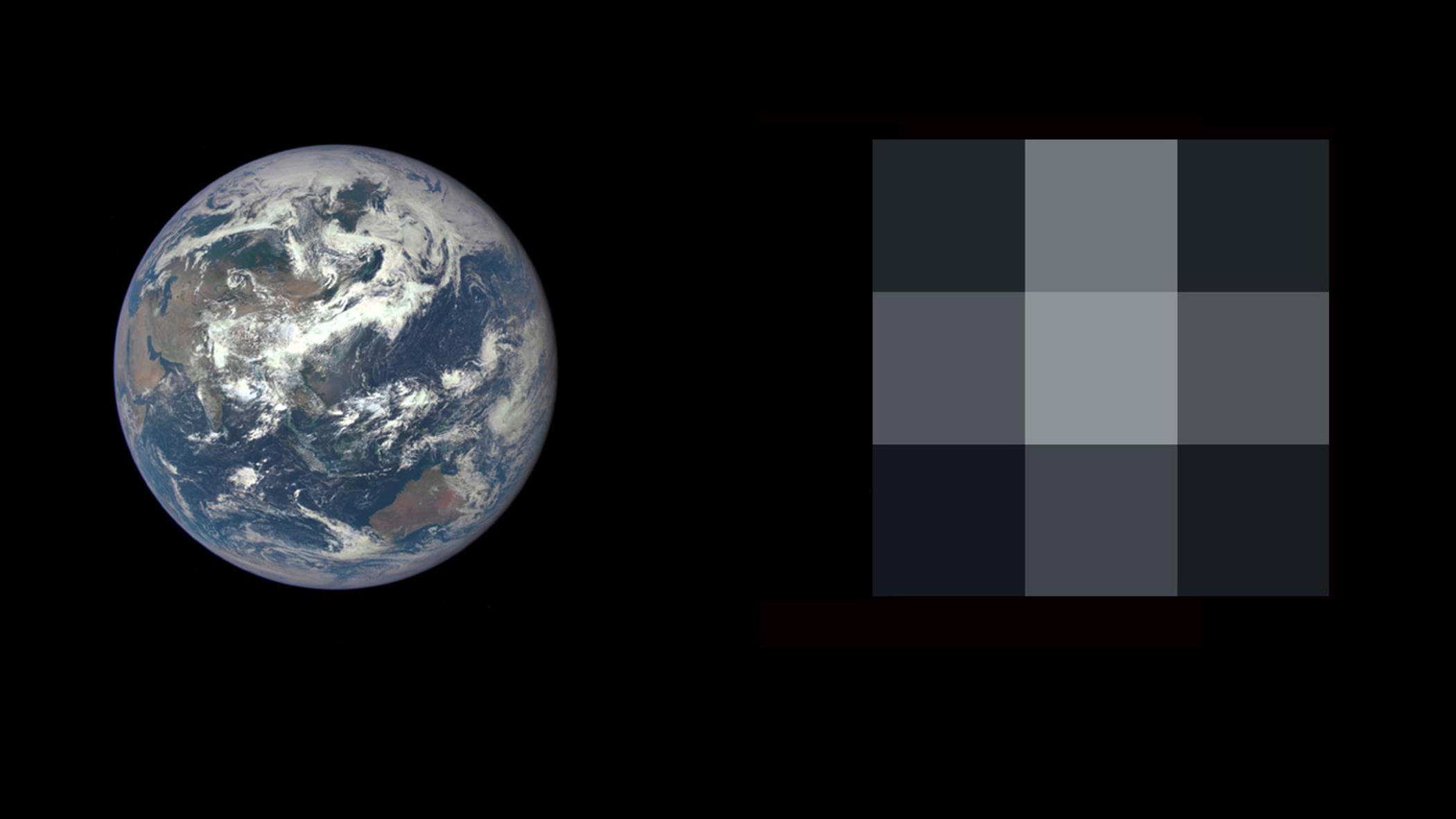What our first “Earth 2.0” image will teach us
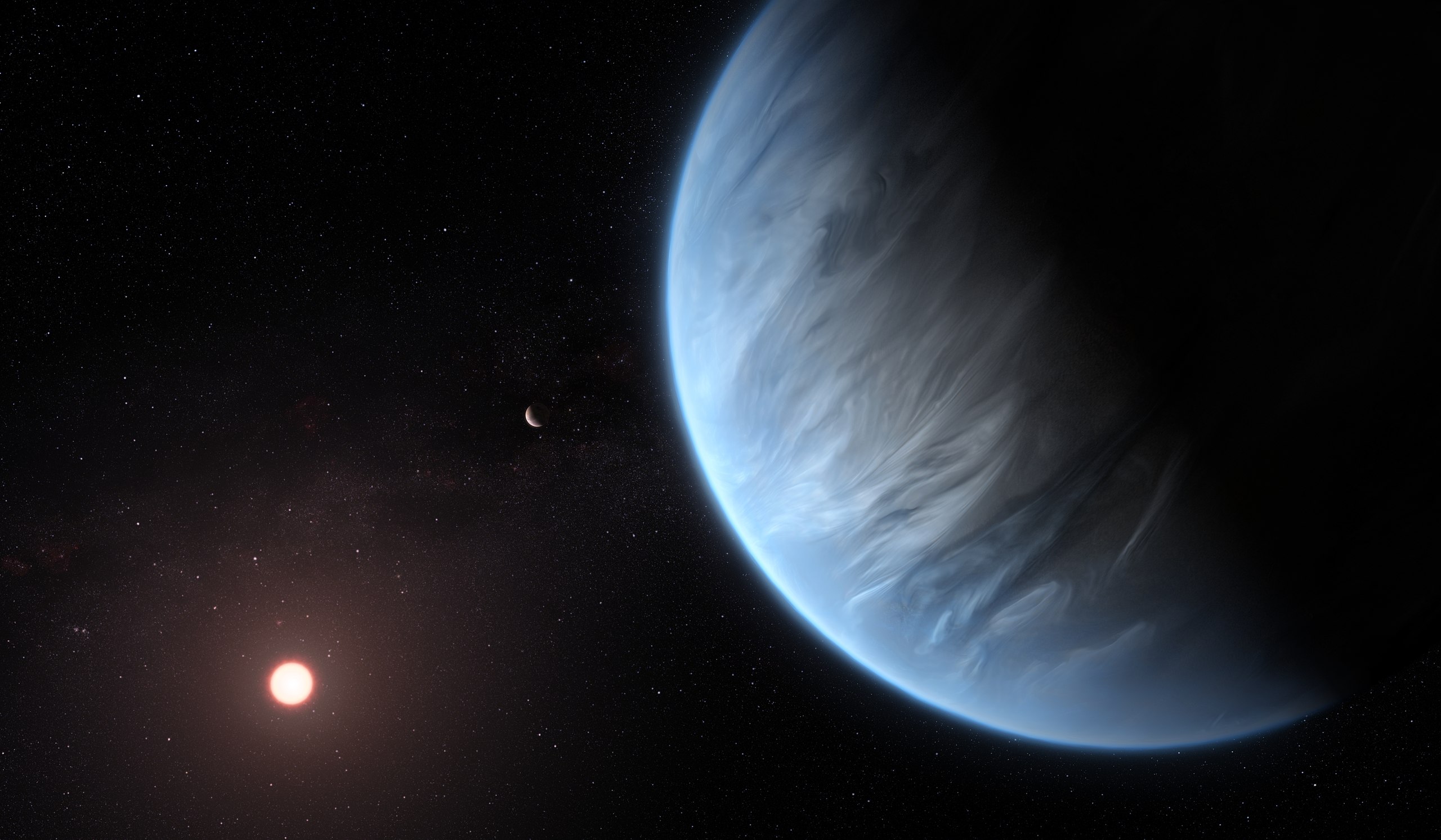
- The nearest star system to Earth is the Alpha Centauri trinary system, consisting of the Sun-like Alpha Centauri A and B, as well as the red dwarf Proxima Centauri.
- Proxima Centauri has an Earth-sized exoplanet that transits in front of the star’s main disk, and Alpha Centauri A and B could have one or more Earth-sized worlds in orbit around them.
- After JWST and the Nancy Roman Observatory, NASA’s next astrophysics flagship will be the Habitable Worlds Observatory, which could directly image them. Here’s what we’ll learn, at long last.
If we were an alien species viewing Earth from afar, how would we tell that it’s not only an inhabited world, but a world inhabited by a technologically advanced, intelligent species? From up close, those signatures are unmistakable. Our planet contains continents, oceans, and partial cloud cover, as well as polar icecaps. As the seasons change, the continents change color between green and brown and white, depending on the success of vegetation and/or the cover of ice and snow. The clouds change on a much faster timescale, sometimes covering the continents, sometimes the oceans, and sometimes a bit of both. Meanwhile, the icecaps advance and retreat dependent on our axial tilt’s orientation, providing yet another annual variation in our surface’s properties.
There are other signatures of terrestrial life on our world. The carbon dioxide concentration in our atmosphere changes seasonally, and continues to rise steadily on an annual basis; the atmosphere additionally contains chemical compounds that only exist because they were added there owing to human activity. At night, a small amount of visible light radiation gets emitted from our surface — owing to artificial lighting at night — while a high-enough resolution image, such as the ones taken from low-Earth orbit by the International Space Station, can reveal cities, farms, and other large-scale features on our surface. It’s enough to make us wonder: if we’re lucky enough to discover another similarly “living” planet, what will we see?
It’s a fascinating question whose answer is only limited by our technological developments. Excitingly, we might get to answer this question — and one of the ultimate ones, of whether there are other living planets out there in the galaxy — within the next 20 years.
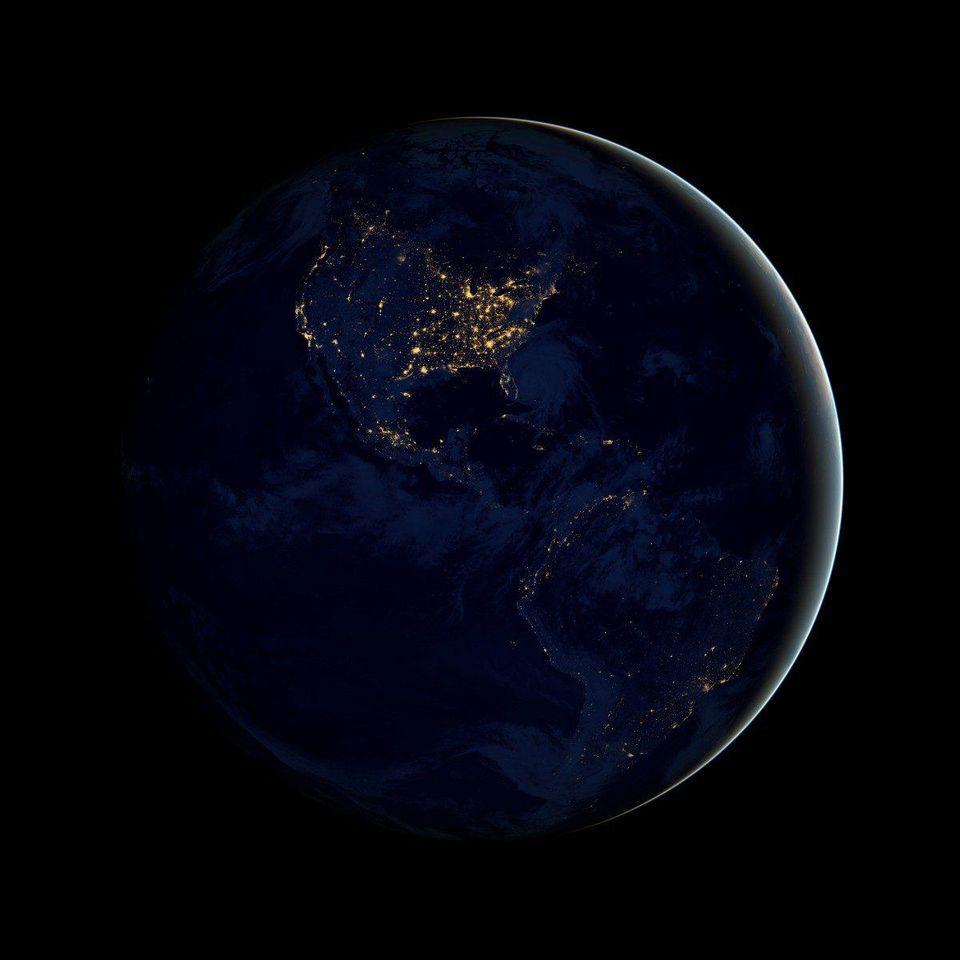
The first thing you have to recognize is that if we want to see any of the planets that are out there around any star beyond our own Sun, we’re going to need to find a way to directly observe that planet despite its proximity to its parent star. In many ways, that’s an incredible challenge for astronomy: making out a much fainter light source close by a much brighter, larger light source is an incredible challenge. Just as it’s incredibly difficult to make out a single firefly when it’s in close proximity to the disk of the Sun, it’s extremely challenging to make out the light from a planet when a much, much brighter star is in such close proximity to it.
If we were to view our own Solar System from a great distance, we’d find that the Sun was much, much brighter than the Earth: about 100 billion (1011) times brighter, corresponding to a difference of ~27.6 astronomical magnitudes. As viewed from Earth, that’s about the same difference between seeing the planet Venus — the brightest single object other than the Moon in Earth’s night sky — and Pluto’s moon Nix: the smallest, faintest moon in the Plutonian system, which was discovered only in 2005.

There are ways to probe the properties of a planet without direct imaging, and we’ve already been successful at leveraging some of them. For example:
- when a star gravitationally pulls on an orbiting planet, the planet pulls back on the star, causing the star to move in response to the planet’s presence,
- when a planet passes between its parent star and our line-of-sight, it obscures a portion of the star’s disk, enabling us to notice a periodic dip in the star’s brightness,
- and, if the planet that intervenes between the star and our line-of-sight has an atmosphere, then a tiny portion of that starlight will filter through that planet’s atmosphere.
The first example is known as the radial velocity method in exoplanet sciences, and it allows us to determine the mass and orbital period of the exoplanet that tugs on the star. The second is known as the transit method — leveraged most famously by NASA’s Kepler and TESS missions — and gives us the physical radius and orbital period of the exoplanet. And finally, the third can only be leveraged at present for a small fraction of transiting exoplanets, but is known as transit spectroscopy.
With the right equipment, such as the instruments on board the JWST, we can now probe the atmospheres of many different planets for compounds like water, methane, ammonia, carbon dioxide, and many signatures, or at least hints, of life and complex chemistry. However, there are rather severe limits on what current technology can achieve.

Even with its huge eye on the sky and novel, state-of-the-art instruments, JWST is only capable of measuring the atmospheres of transiting exoplanets that are:
- the size of Jupiter around hot, massive stars,
- the size of Neptune around Sun-like stars,
- and slightly larger than Earth — so-called “Super-Earth” sized planets — around most red dwarf stars.
The dream of measuring an Earth-sized planet’s atmosphere with current technology is still out of reach for all but the closest transiting planets around the smallest, faintest stars of all.
But what if we wanted to go a step farther than our current or just on-the-horizon technology is capable of? What if we wanted to directly image exoplanets, rather than hope for a perfectly-aligned (and rare) transit?
Currently, direct imaging of exoplanets is possible, but only for a very small subset of exoplanets. In particular, the only planets our modern telescopes — both the larger diameter ground-based ones and the smaller diameter but above-the-atmosphere space-based ones — are capable of resolving are planets that are simultaneously large (and reflective) compared to their parent stars and also well-separated in space, or at a large orbital distance, from their parent stars. We presently accomplish this through the use of a coronagraph. Originally leveraged to block out the disk of our Sun, enabling solar astronomers to view the solar corona without having to wait for a total solar eclipse, the use of a coronagraph, when applied to exoplanet systems, can enable us to block out the light of the parent star sufficiently so that some of the orbiting planets, perhaps even the innermost planets, can become visible with the right equipment.

Unfortunately for most applications, even with leveraging modern coronagraph technology, what we’re capable of observing is still highly limited. Coronagraphs can block out the light of the star, but only to a point. Remember, to get an Earth-like planet around a Sun-like star, we’d need to be able to block the Sun’s light to within 1 part in 100 billion just to have a chance at seeing the Earth behind the glare of the Sun. The best coronagraphs we have today are impressive, but can only block the star’s light in a range from 1 part in 100 million, with future coronagraph technology expected to reach 1 part in 10 billion, at most. We’re still quite a bit away, technologically, from giving us the light ratios we need.
While there is hope that coronagraph technology will continue to improve — and NASA’s next astrophysics flagship mission, the Nancy Roman Observatory, will feature the greatest coronagraph ever constructed — there is a technologically superior option for blocking out the light from a star to better see the planets orbiting it. Instead of using a coronagraph, where the optical “mask” that blocks the star’s light is close to the telescope mirror itself, you could instead use a different kind of mask with a different set of geometrical optics to block out the star’s light to an even more significant degree: a starshade.
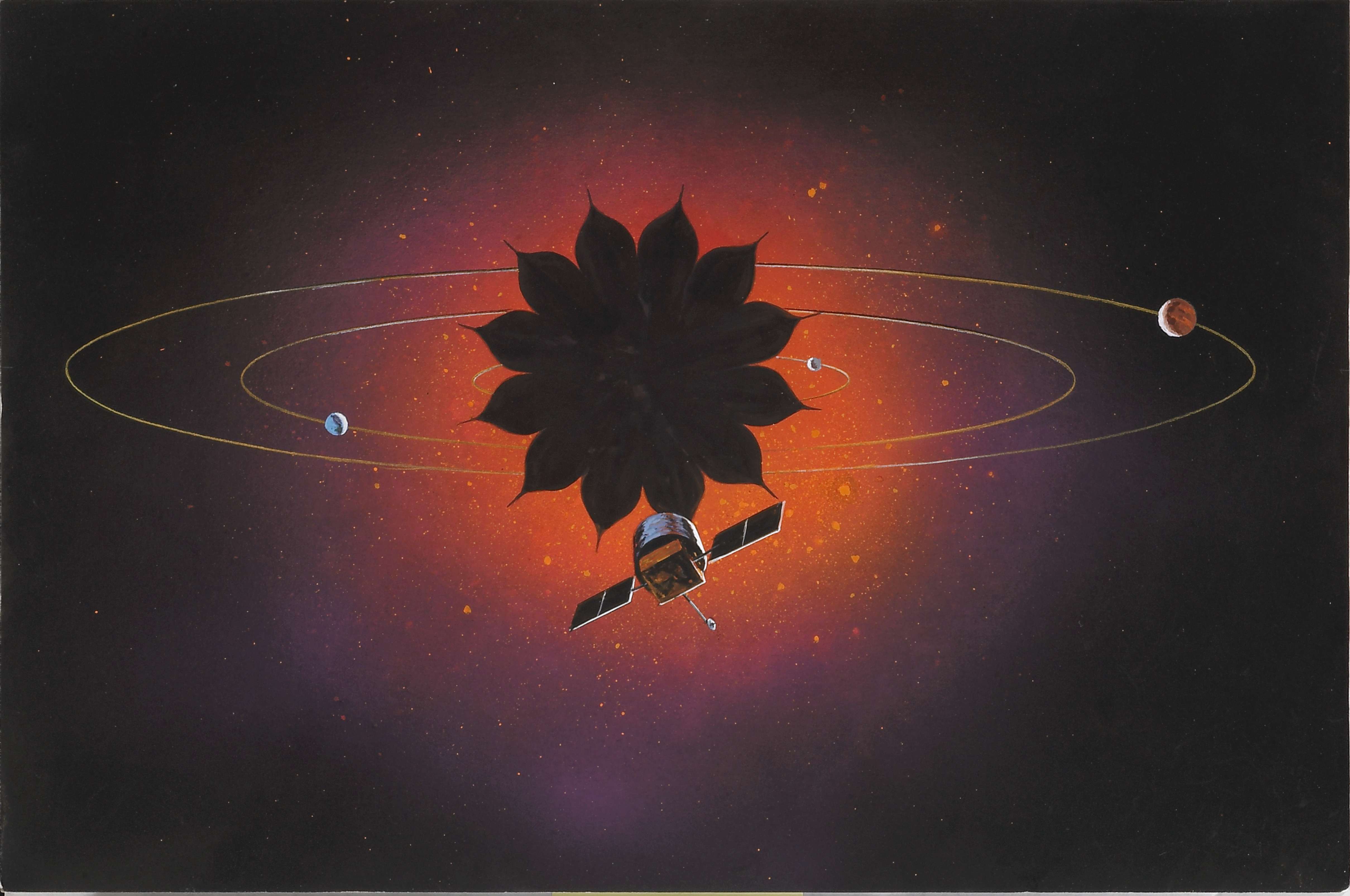
This sunflower-shaped disk in space looks different from a spherical coronagraph for a simple reason: it’s meant to completely eliminate the constructive interference that would arise from the wave nature of light causing optical “fringes” and bright spots as it gets bent around a circular/spherical obstacle. When light — which has wave-like properties — encounters an obstacle, the light from the edges of the obstacle gets optically distorted, creating a familiar phenomenon of concentric rings both inside and outside the shadow-cone created by the obstacle itself. This phenomenon, first uncovered in gory detail way back in the 1800s, makes seeing faint objects that are found close to bright ones very difficult, even with a light-blocking tool like a coronagraph.
With a starshade, however, the shape of the obstacle is designed so that it’s basically optically perfect: all of the constructive interference is eliminated. At design sensitivity, it can provide contrast ratios approximately 10-to-100 times greater than a similar coronagraph, unlocking the potential to finally directly image Earth-sized planets at Earth-like distances around Sun-like stars. If we want to directly image whatever world might happen to fit our definition of Earth-like, a starshade is the slam-dunk way to get there. The big problem, however, is distance: in order for the starshade to work properly, it can’t be located close to the telescope it’s working with; it must be located several tens of thousands of kilometers away, at least.

A starshade, although optically alluring, has some significant drawbacks when compared to a coronagraph. A coronagraph is part of a telescope’s assembly, meaning that when you rotate the telescope to point at a different target in the sky, the coronagraph moves with the telescope. With proper calibration and alignment, it will take at most only hours to set yourself up for observing your target star with a coronagraph. Over the span of a week, particularly with a space telescope, you could observe perhaps up to ~20 unique Earth-sized planets around Sun-like stars if you can reach the appropriate light-reduction thresholds.
But a starshade has to be far, far away from the telescope to be effective. That means it needs to be enormous, so that it’s the right angular size to block the parent star’s disk at its substantial (tens of thousands of kilometers) distance from the telescope. It needs to be perfectly, precisely, optically aligned with both the telescope and the star in question, and it needs to remain perfectly aligned over the course of the observation, taking precision flying to a new extreme. And then — at the end — it needs to fly off toward the next target, traveling a great distance once again. Over the span of a year, a single starshade/telescope combination can only image the planets around a few handfuls of stars, at most. However, owing to the superior light-reduction capabilities of a starshade, the amount of observing time required to reveal the features of an exoplanet’s spectrum will be shorter; once the starshade is in place, the advantages over a coronagraph alone are enormous.

Now that JWST is operational and the Nancy Roman Telescope is on deck as NASA’s next astrophysics flagship mission, the community is looking ahead to the flagship mission after that: Habitable Worlds Observatory. Whether it will have a starshade or the most advanced coronagraph ever is still yet to be determined, but by then, either coronagraphy should advance to the point where this one part in 10-100 billion is achievable or we’ll go ahead and build a starshade to fly with the observatory. In either case, Earth-sized exoplanets at Earth-like distances from Sun-like stars should be within our reach.
(Important caveat: whether such a planet qualifies as an “Earth-like” world, complete with things like liquid water on its surface, a thin but substantial atmosphere, and biologically friendly compounds populating its outermost layers, remains to be seen. Based on the other properties of planets we can measure, we have a slew of candidates for Earth-like planets, but no compelling data either way toward determining which of these worlds, if any, are truly like Earth.)
A space telescope that was only about half a meter in diameter could find an Earth-like planet around a star like Alpha Centauri; one comparable in size to the JWST, which is what the Habitable Worlds Observatory is presently shooting for, would be able to probe dozens of nearby stars each year for exoplanets. But even with the next-generation technologies that we envision, these exoplanets will only appear as no more than a single pixel in our instruments. That’s okay, however, because even with a single pixel that happens to be a direct image of an Earth-sized exoplanet, we can both watch it over time to see how it varies, and observe it spectroscopically, in multiple different wavelengths of light all at once. These facts, combined, will enable us to extract an enormous amount of information.
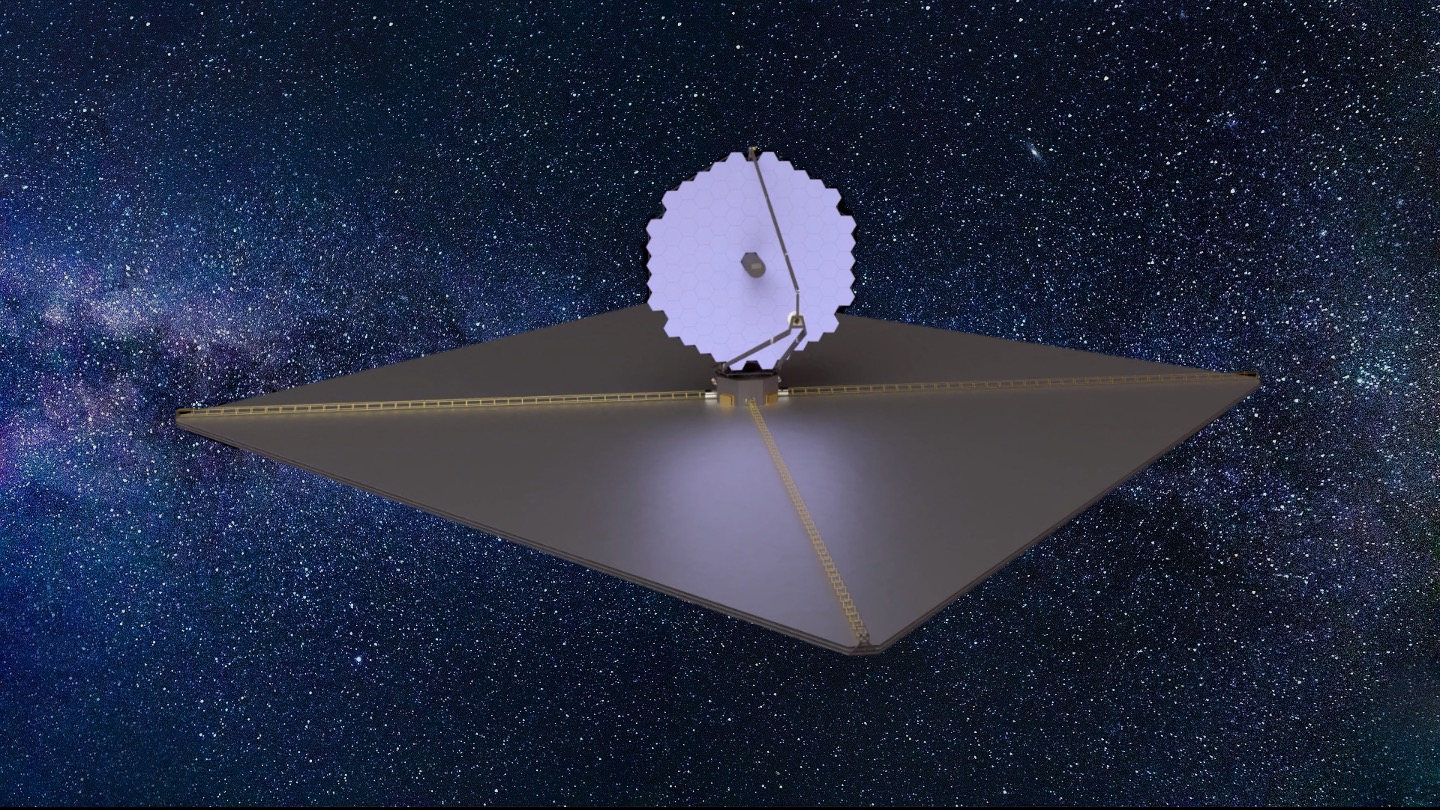
Any planet that we observe in multiple different wavelengths for long periods of time would show variations, and those variations will be incredibly informative. Just from a single pixel of an exoplanet that changes over time, we’d be able to learn:
- what the rotation rate of the planet is,
- how much of its surface is covered in clouds over time,
- what the reflectivity and composition of the clouds are,
- whether there are continents and oceans on the world, and if so, what percentage of the surface is covered by both,
- whether there are icecaps, and how those icecaps grow and retreat over the seasons,
- whether and how the continents change color over the course of a complete planetary revolution,
- whether, from orbital variations, the planet possesses a large moon or set of moons,
- and whether, if there’s a strong enough Faraday rotation effect, the planet displays evidence of having a planet-wide magnetic field.
This is an incredible amount of information, and something we should celebrate when we first manage to acquire it about any world beyond our Solar System. However, there’s one additional step that we may someday take: building a telescope large enough to image these Earth-sized planets as more than a single pixel.
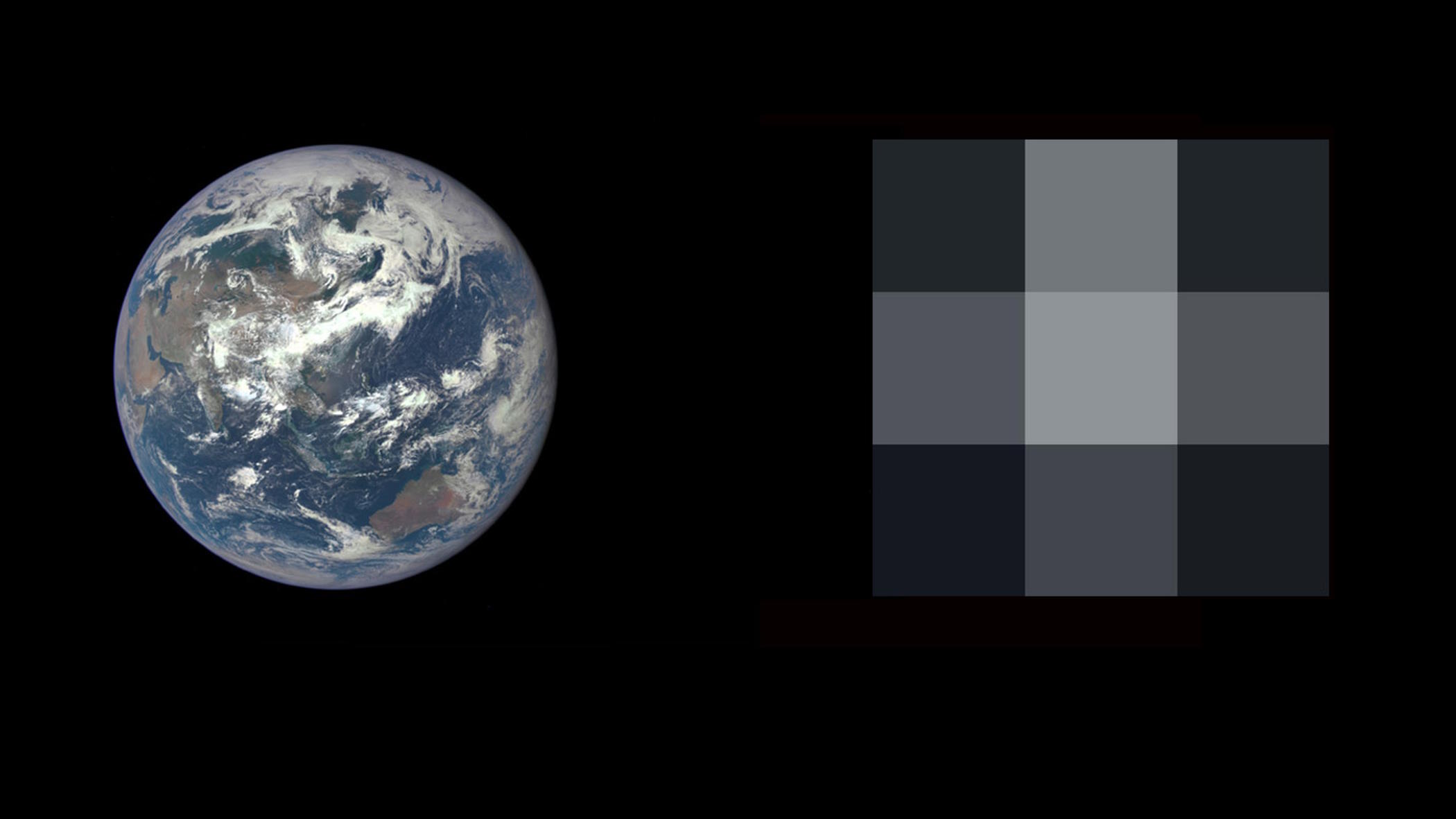
This would be an enormous, unprecedented undertaking, but one that isn’t technically impossible. If you assume that around one of the two Sun-like stars in the Alpha Centauri system, 4.3 light-years away, is an Earth-sized world at an Earth-like distance, a telescope that had better resolution than ~65 micro-arc-seconds would be able to begin resolving actual features on this world in real-time. If there are artificial lights on the night side, a telescope this large would be able to discover them. If there are large, civilization-scale modifications that have taken place on this world, a telescope like this would be able to detect them directly.
The only problem? In order to obtain that level of resolution, even from a space telescope, you’d need to build an optical telescope that was between 2 and 3 kilometers in diameter. That’s approximately ~100 times the diameter of the largest ground-based telescopes presently under construction! An alternative solution would be to network together several optical telescopes in an array, separated by a baseline of 2-to-3 kilometers, and perform an optical/infrared version of very-long baseline interferometry (VLBI) on them. It’s a challenge, but perhaps one that late-21st century astrophysicists will be up to.
When you think about the possibility that there could be an Earth-like planet just 4.3 light-years away, it seems like the most straightforward thing of all to simply go out and find it. Just by building and launching a telescope with fathomable, near-future technology could reveal such a planet’s surface features and habitability status. Astronomy, the most ancient science of all, is truly poised to reveal — if nature is kind to us — the very first inhabited planet beyond our own Solar System.
